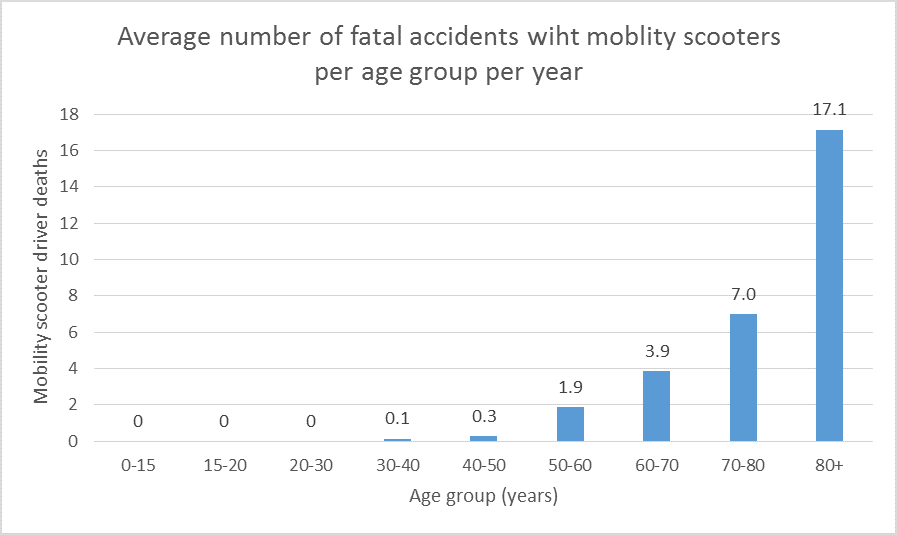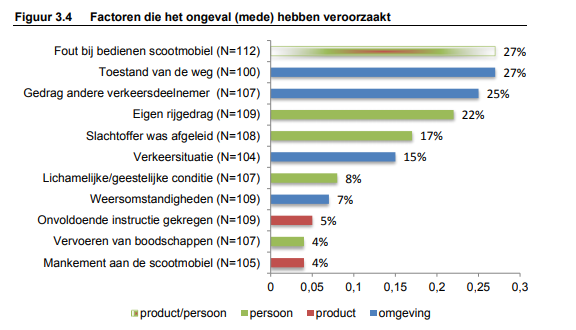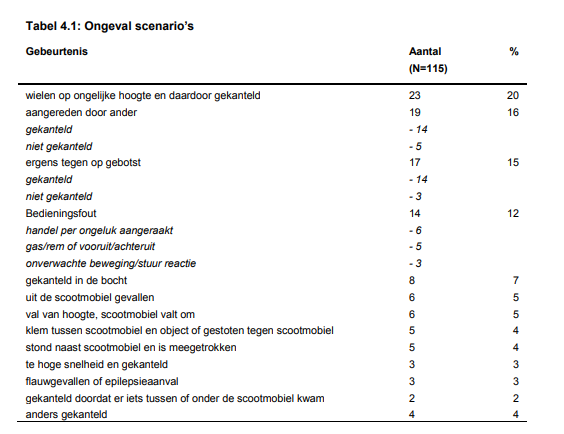PRE2017 3 Groep6
This page is not yet finished, it also still has to be proofread.
Autonomous mobility scooters
Need for Autonomous mobility scooter
Traffic related deaths
In the period of 2010-2016 the average number of traffic related deaths in the Netherlands per year is 650, of which 30 mobility scooter drivers. This is 4.7% of the traffic related deaths. Compared to the average of 184 cyclist that died pear year in this period of time, which is 28% of traffic related deaths, this seems like a low number. But the fact is that 84% the Dutch own a bicycle, which means that there are at least 13 million cyclist in the Netherlands (using 16 million inhabitants). This while there are less than 400 thousand mobility scooters. Which translates to more than 0.0075% of the mobility scooters having fatal accidents, while less than 0.0014% of the cyclists have fatal accidents. Which means a mobility scooter driver is at least 5 time more likely to die in a traffic related accident than a cyclist.
Elderly in mobility scooters
This bar chart shows the average number of accidents in which the mobility scooter driver died in the period of 2010-2016.
This bar chart shows the percentage of traffic related death of which the person was a mobility scooter driver in period of 2010-2016.
(Personal note: It is important to note that the older a person is, the more likely they are to be driving in mobility scooter. This should have an effect on the number of related deaths of a mobility scooter driver)
It could be assumed that the rise in the amount of deaths for the age group of 70+ is caused because this age group is more likely to drive in a mobility scooter. But as seen in this table, they are more likely to die in any related traffic accident.
Source for all these statistics: Statline CBS
Conclusion
There are a high number of fatal accidents where mobility scooter drivers lose their lives, compared to one of the main modes of transportation in the Netherlands, which is cycling. The automated mobility scooter should have an impact on these numbers.
Non-fatal accidents
Up till now only fatal accidents were considers, but there are also accidents which result in a trip to the emergency room. In the year 2016, 1600 people had to be treated at the emergency room because they had an accident while driving a mobility scooter. VeiligheidNL had 115 people who had to be treated at the emergency room because they had an accident with a mobility scooter take a survey. (VeiligheidNL <--Needs proper source formatting) This showed that in most cases, the accident could have been avoided if the mobility scooter was automated. This survey also showed that in 88% of the cases, the accidents accord in an area the people had been before.
(Still needs translation to English)
(Still needs translation to English)
The original page
Why is there need for an automated mobility scooter
State of the art review
We started with a state of the art review to see what is already out there. We concluded that there were a lot of solutions for subproblems but not something that could combine all those solutions. A summary of the state of the art review is on the following page State of the art review.
Preperation for requirements
We made an user scenario which can be found on the following page user scenario. This scenario was the starting point for our requirements. We also had a look at the laws. One the following page we have information on traffic rules for mobility scooters Trafic rules for mobility scooter. Additional requirements were added due to these rules.
Requirements
autonomous mobility scooter requirements
Solutions for requirements
Smart Mobility and Sensor Fusion
Planning and coaching
During the project we had coaching meetings. To prepare for those meetings we weekly answerd coaching questions. The questions and answers can be found on the following page Coaching Questions Group 6. There also is a page with extra information for the first meeting, First meeting preparations.
We also made a planning which can be found on the following page Planning Group 6.



